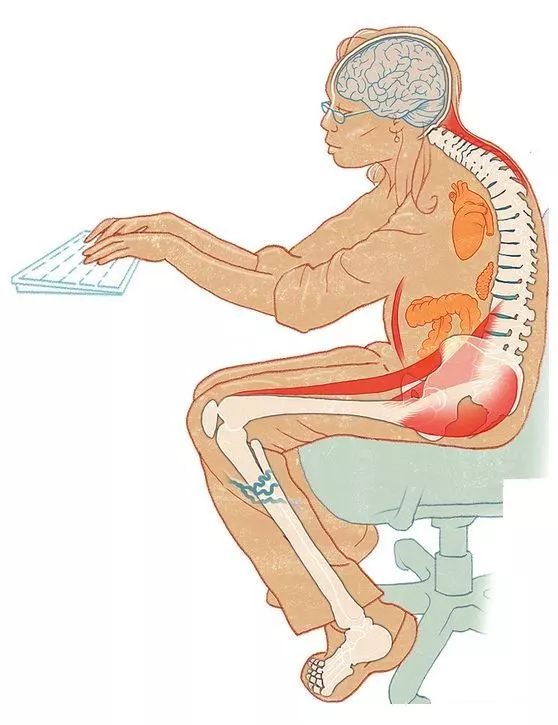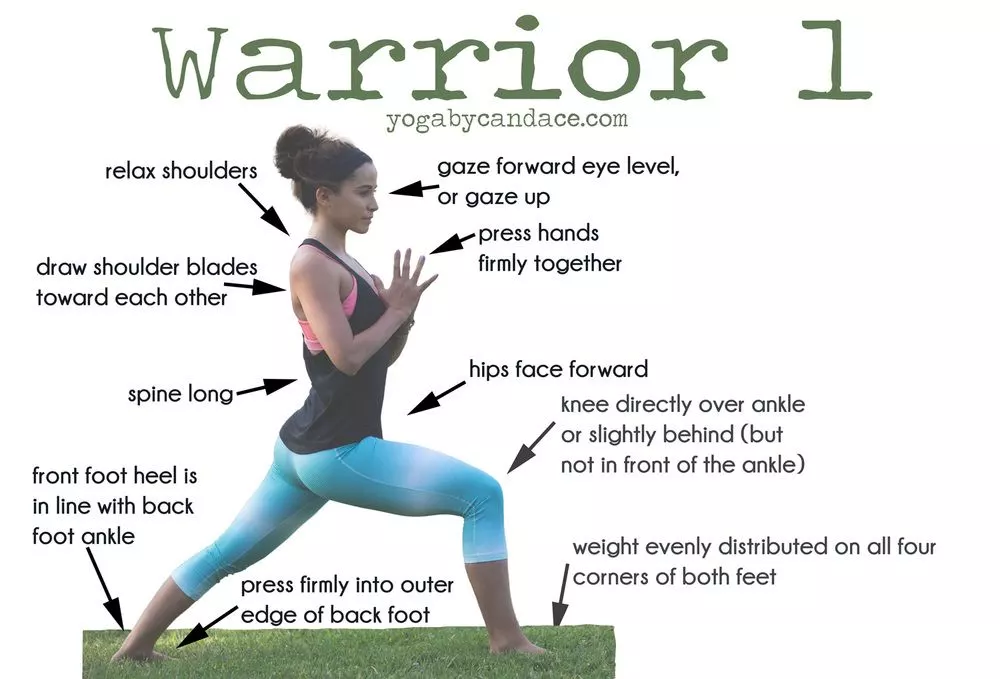Sitting for long hours and less physical activity increases the risk of heart diseases, sleep disorders, premature death, mental fatigue, etc. American Heart Association states that there is an 83% hike in sedentary jobs since 1950 and only 20% of the U.S. population is into physically active jobs.
The current work environment demands desk bound jobs, glued to the screen for minimum 8 hours a day for at least five days a week.
The most common problems associated with sedentary jobs include back pain, tight hips, cervical, low eyesight, low focus, collapsed shoulders, obesity, type 2 diabetes, etc. Modern day lifestyle has sentenced us to a desk death and if we are not on the desk, we are on the laptop or smart phone, a tech lure leading us to a deep pit.
The Anatomical Effect
Upper Body
The lack of physical activity reduces the flow of blood and oxygen in the cells, leading to brain fogging and low focus. The muscles become tight and sluggish and fatty acid accumulates in the arteries leading to high cholesterol, High BP and increased chances of cardiovascular diseases.
The neck hangs or tilts to one side, creating a permanent imbalance in the neck. The shoulders fall forward as well to support the neck, creating rounded shoulders due to low strength in the rhomboids and straining the trapezius muscle that connects to the neck and shoulders. This gives rise to cervical, neck strains and low motion of the arms.
Middle Body
Prolonged sitting hours can lead to squashed discs in the vertebrae as they are squeaked and unable to draw in fresh blood and nutrients. Collapsed back muscles causes unused abdominal muscles and a detrimental posture, which often leads to the spinal arch. It can increase further leading to diseases like hyperlordosis or sway back.
As we slouch, we contract the lungs and diaphragm, which are responsible for relaxed breathing practices. This negatively impacts our breathing capacity resulting in shortness of breath and increased stress and anxiety.
 Chances of colon and breast cancer increases as well, as a higher level of insulin pump in the body encourages unwanted cell growth. A study by the National Centre of Health, Physical Activity and Disability, Alabama shows a 40% decrease in cancer rate in people who are physically active.
Chances of colon and breast cancer increases as well, as a higher level of insulin pump in the body encourages unwanted cell growth. A study by the National Centre of Health, Physical Activity and Disability, Alabama shows a 40% decrease in cancer rate in people who are physically active.
Lower Body
Tight hips are yet another major cause of worry in chronic sitters. The hip flexors are not used very often and lead to low range of motion in the legs, pain in the lower back and imbalance in standing poses.
Varicose veins, tingling and numbness in the feet and swollen ankles are few other ailments as the blood flow in the lower body is decreased, which further forms fluid pools. When we sleep, this fluid travels through the blood to the neck leading to swollen neck, disturbed sleeping patterns and shortness of breath while sleeping.
Regular movement does not only boost the immune system but also strengthens the lower body and generates denser and stronger bones in the legs.
Workout: The Answer?
A heavy workout in the gym or sweating in a yoga class, a nutritious breakfast and a healthy diet is not enough. Yes! It is not. People who workout and those who don’t are equally exposed to sedentary job health risks. Because, when you sweat it out and consume nutrients, the body starts its healing work. It consumes the nutrients and supplies it to the area that needs the most.
By this time either we have reached the office, driving to work or started with our daily work. This gives rise to micro-tears in the body. The body starts using the healing energy gained from the workout to cure the trauma of poor posture and excessive sitting. In a nutshell, we are sabotaging our own efforts in the gym by the incorrect posture and excessive sitting hours.
The antidote

So what is the answer to a sedentary lifestyle when we cannot abandon it? A workout is never going to be enough for the chronic sitters. The only saviour is ‘movement’.
Jen Ator in her book ‘The 2 second life changer’, mentions a study that shows participants who got up regularly from their seats during work hours have two inches slimmer waistline as compared to those who got up least.
Move around as much as possible. When we move, we are pumping in more blood to our body and creating an extended awareness level as well. When we increase activities like cooking, eating, sleeping, washing, walking we burn more calories and stay fit.
The moves
A healthy body is one who spices up everyday life with various forms of movements.
-
- Take regu
 lar walking breaks, like every 30 minutes, that help your circulation, working to counteract some of those problems.
lar walking breaks, like every 30 minutes, that help your circulation, working to counteract some of those problems. - Alternating between standing and sitting at your work place. For example, sit while writing an email and stand while chatting with a colleague.
- Sitting on something wobbly like an exercise ball or a backless stool to get your core muscles to work.
- Stretching at your desk may be one simple way to keep moving, even as you stay seated.
- When you want to get stuff delivered, if you can, deliver it yourself. It might seem odd initially, but no compromises when it comes to health.
- Take the stairs instead of the elevator, go to your junior for certain work rather than sending a mail.
- Attend calls while you are on the move.
- Go to the mall or grocery store instead of ordering online or tele-calling for everyday stuff.
- Cook a meal or go out and eat instead of calling for home delivery.
- Walk around the house during TV commercials.
- Stretch the legs under the table while working by lifting the legs to knee level and bringing them back down.
- Take regu
- Apart from these options to incorporate more activity during the work day, you can also practice specific yoga poses to help you beat the stiffness, stress and diseases. Some of the yoga poses that can be incorporated to the everyday workout regime are Mountain pose, Cat and Cow pose, Warrior poses 1 & 2, forward bending poses, butterfly pose, neck stretches, Cobra pose, Child’s pose etc.
When we cannot change the circumstances, we should change our habits. Ensure a correct posture, proper height of the screen, flat feet on the floor (not hanging) and elbows 90 degree on the sides to enjoy less and no side effects of sedentary jobs.
Image Source
Sitting
Exercise
Posture
Cat and cow pose
Devolution






